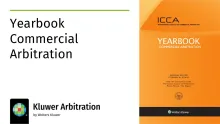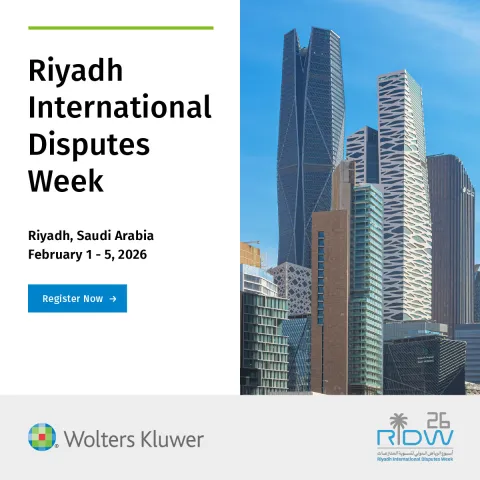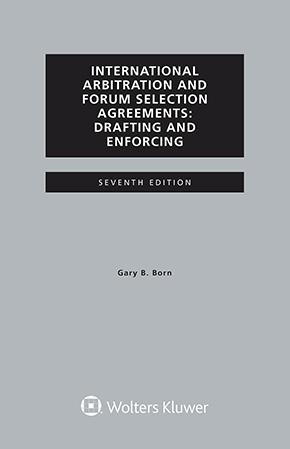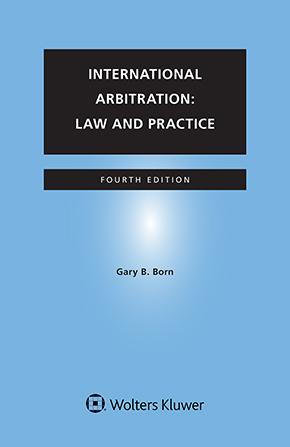Arbitration and Human Rights Following Semenya v Switzerland: The Commercial “Firewall” and EU law
August 29, 2025
To what extent should national courts supervise the Court of Arbitration of Sport (“CAS”)? This question has exercised both the Court of Justice of the European Union (“CJEU”) and the European Court of Human Rights (“ECtHR”) this summer. As athletics fans prepared to watch the Diamond League, the Grand Chamber (“GC”) of the ECtHR delivered its judgment in Semenya v Switzerland (“Semenya”). Just weeks later, as the UEFA Women’s Euro Championship concluded, the CJEU issued its ruling in RFC Seraing v FIFA (“Seraing”).
In a previous post, we outlined the GC’s reasoning in Semenya and explored the standard of review which Article 6(1) (the right to a fair trial) of the European Convention of Human Rights (“ECHR” or “Convention”) requires national courts to apply to arbitral awards in cases displaying two features: first, the arbitral proceedings engage fundamental rights; and second, arbitration is mandated by a sporting organisation. In this post, we ask whether that heightened judicial scrutiny could apply to cases—such as arbitration under commercial contracts—that lack the second feature. What, in other words, is the true scope of the “particularly rigorous examination” standard emerging from Semenya? And could Seraing now influence that scope? We first address the question of scope through the lens of a disagreement within the GC before turning to the relationship between ECHR and EU law in this area.
An Article 6(1) Controversy
In Semenya, Judges Eicke and Kucsko-Stadlmeyer expressed concern at the “real risk that [the ‘particularly rigorous examination’] requirement will be translated to other appeals against or challenges to arbitral awards (of whatever nature)” (Joint Partly Dissenting Opinion, para. 17). Those concerns evidently prompted their narrow interpretation of the “civil” right in play in the proceedings in the Federal Supreme Court (“FSC”). On their analysis, the relevant “civil right” for Article 6(1) purposes was confined to the right to appeal to the court on the grounds prescribed by national law. On that basis, the FSC’s conclusion that Ms. Semenya had failed to establish the “public policy” ground of appeal amounted to the very adjudication to which she was entitled under Article 6(1). In their view, the majority erred by treating the “civil right” as the underlying rights in play in the arbitral proceedings (Joint Partly Dissenting Opinion, paras. 12-15).
The difficulty with this approach is that it is inconsistent with the well-established basis for State responsibility found in the Mutu and Pechstein line of authority. The text of Article 6(1) guarantees a right to fair hearing before an independent and impartial tribunal “in the determination of [the applicant’s] civil rights.” As noted here, where an award is challenged in the national court on ECHR grounds, the State acquires responsibility not only for the conduct of the challenge but also for the underlying “determination” of civil rights by the arbitral tribunal—so long as the “rights” adjudicated have some basis in national law.
The GC majority were careful to explain that rights corresponding to Articles 8 and 14 did have a sufficient basis in Swiss law, including its constitutional provisions and public policy rules (GC, paras. 52 and 207). Indeed, ECHR rights form part of the domestic law of every Contracting State, either directly (in monist legal systems) or through domestic legislation such as the (Irish) European Convention on Human Rights Act 2003 and the (UK) Human Rights Act 1998.
If the original determination of rights fails to meet the requirements of Article 6(1) (i.e., “a proper examination of the submissions” and a reasoned decision including “a specific and express reply” to submissions decisive for the outcome (GC, para. 194)), then where the State provides an appeal or challenge— whether from a lower State court or an arbitral tribunal—it is entirely orthodox to insist that the court remedy that state of affairs.
Enter EU Law: Seraing
The dispute in Seraing arose because the Belgian football club RFC Seraing transferred economic rights of certain players to a Maltese company. Fédération Internationale de Football Association (“FIFA”) found that this violated its third-party ownership prohibition (CJEU, paras. 11-20). The club unsuccessfully challenged the decision before the CAS and the FSC (CJEU, paras. 25-42). The club also turned to the Belgian courts, alleging that the prohibition contravenes EU law. The Brussels Court of Appeal held that a CAS award upheld by the FSC is res judicata under Belgian law. The Belgian Court of Cassation made a preliminary reference to the CJEU (for the Belgian proceedings, see CJEU, paras. 43-59). The CJEU (sitting as a GC) held that national courts must be able to assess whether an arbitral award is consistent with EU public policy and grant appropriate relief. Therefore, the Belgian courts had to set aside the domestic provisions giving the CAS award the status of res judicata (CJEU, paras. 101-22). For an in-depth analysis of Seraing, see here.
The CJEU’s Seraing judgment aligns with its earlier judgment in International Skating Union v Commission (“ISU”) (explained here), in which it stated that national courts must “be able to cover the question of whether [CAS] awards comply with . . . EU public policy” (ISU, para. 193).
Can the Semenya Firewall Around Commercial Arbitration Hold in Light of Seraing?
Ultimately, the CJEU in Seraing applied the same standard of review to “mandatory” sports arbitration as it had to “voluntary” commercial arbitration in its Eco Swiss line of jurisprudence, namely review of compatibility with EU public policy (Eco Swiss, para. 41; Seraing, paras. 117 and 125). This is interesting for two reasons. First, in the text of its Seraing judgment, the CJEU emphasised the differences between commercial arbitration and sports arbitration, the latter occurring in a context where the sports association has “extensive regulatory and oversight powers” over athletes and clubs and “unilaterally imposes” arbitration (Seraing, paras. 92-93, 96). Yet it did not explicitly carry this distinction into its analysis of the standard of review. Second, the thrust of Advocate General Ćapeta’s Opinion in Seraing was that mandatory and voluntary arbitration are fundamentally different, so they must be subject to different standards of review (Opinion, para. 108). She proposed that national courts should be able to review CAS awards for compatibility with all EU law, not just EU public policy, since athletes and clubs “do not freely choose to exclude the application of some EU rules to their situation” (Opinion, paras. 112-14). The CJEU, however, did not follow this route.
That leaves both a symmetry and a contrast between EU and ECHR law. On the one hand, both systems, in identifying the need for heightened review, accord significant weight to the nature of the rights and obligations engaged within the arbitral proceedings: as regards the ECHR, “fundamental” rights; and as regards the EU, rules amounting to public policy. On the other hand, the ECtHR differentiated the required standard of review by reference to the mandatory character of the arbitral proceedings, while the CJEU did not. To that extent, EU law is now affirmed as lacking a commercial “firewall,” raising the question whether the firewall can now survive in ECHR law.
It is not clear why the heightened scrutiny envisaged in Semenya should, logically, be limited to the sporting context, particularly as the CJEU in Seraing apparently saw no reason to lay down a corresponding limitation. True, sporting organisations in many ways resemble (as the GC noted in Semenya) public law bodies in a “vertical” relationship with their members, boasting quasi-legislative powers but lacking corresponding public safeguards. However, sport is not the only context in which features of this kind are present. There could well be categories of ostensibly commercial disputes where fundamental rights (including discrimination rights) are at issue and the parties are in a conspicuously unequal position, as regards the “choice” of arbitration itself and more generally. An example might be an employment case brought under the arbitration clause found in some seafarers’ collective agreements, where there is no scope for the individual employee to negotiate the dispute resolution mechanism.
Even where arbitration is voluntary, familiar ECHR principles require that the waiver of the right to access a State court be accompanied by “minimum guarantees” (GC, para. 197). An obvious ingredient of such guarantees is adequate review by the national court. On that basis, where fundamental rights are at stake, there should be scope to argue that such review should be “particularly rigorous,” with the precise standard of review calibrated according to the nature of the parties’ relationship and the severity of the impact on the applicant. This might arise, for example, in the context of a contract between a small or medium-sized enterprise and a government or a major State-owned enterprise.
Conclusion
Semenya and Seraing illustrate a trend in the relationship between the Strasbourg and Luxembourg jurisprudence on arbitration, apt to be described as cross-fertilisation accompanied by a degree of convergence. The ECtHR in Semenya gave a detailed exposition of the CJEU’s ISU judgment (GC, paras. 62-68) and adopted the CJEU’s description in ISU of CAS arbitration as “mandatory and exclusive” (GC, paras. 201, 204, and 209). In return, the CJEU in Seraing cited the ECtHR’s Mutu and Pechstein judgment (CJEU, paras. 80 and 92). That trend reinforces the prospect that the Article 6 end point will be a heightened judicial scrutiny principle reaching beyond the sporting universe into certain categories of commercial and “voluntary” arbitral proceedings where fundamental rights are in play and the relationship between the parties demands the safeguard of adequate judicial scrutiny.
A final footnote: together, Seraing and ISU stand in contrast to the CJEU’s Achmea line of authority, in which certain questions are held to lie beyond the scope of arbitration because of the inadequacy (and in the case of ICSID awards, complete absence) of judicial review. ECHR and EU law now each appear to favour a solution in which arbitration is a permissible forum for resolving important legal issues, so long as the tribunal properly addresses those issues and—crucially—the national court undertakes review of sufficient scope to ensure that it has done so. That seems a more measured response than throwing out the arbitral baby with the public policy bathwater. It remains to be seen whether and how this influences CJEU’s future application of its Achmea jurisprudence—and, possibly, the ECtHR’s eventual examination of the ECHR compatibility of that jurisprudence.
You may also like










